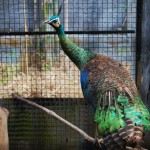PRIMATES
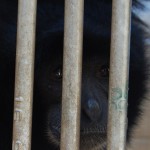 Siamang (Symphalangus syndactylus)
Siamang (Symphalangus syndactylus)
Siamang is a tailless, arboreal lesser ape. It is native to Sumatra in Indonesia, Peninsular Malaysia and a small area of Southern Thailand. Two young siamangs came to the rescue centre on December 9, 2005. They are both male and around 8 years old now. At this age in the wild they would leave their family group. Our siamangs will hopefully be transferred to a rehabilitation facility at Wey Kambas National Park in Sumatra, y, finalmente, liberados de nuevo a la vida salvaje.
.
Lutung Java (Trachypithecus auratus)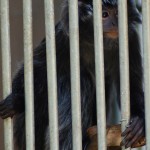
Nuestra hembra lutung Javan fue rescatado en 2010. This species is endemic to Indonesia, and can be found on the islands of Java, Bali and Lombok. Lutungs, también llamados langures o monos de hoja, son animales sociales, viven en grupos de alrededor de siete personas, con uno o dos machos adultos en el grupo. Lutung Javan es una hoja-comedor con un estómago especializado para la digestión de materia vegetal. It also consumes fruit, flowers, flower buds, and insect larvae. We are working on finding a suitable place for this lovely lutung.
.
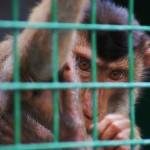 Macaco Sur (Macaca nemestrina)
Macaco Sur (Macaca nemestrina)
Southern pig-tailed macaque has a short tail that is carried half-erect and somewhat resembles a pig’s, hence its name. This species is found in Brunei, Indonesia (Bangka, Kalimantan Borneo, and Sumatra), Malasia (Peninsula Malaysia and Sabah and Sarawak Borneo), as well as southern peninsular Thailand. We have three Southern pig-tailed macaques, two males and one female at BWRC. These macaques will hopefully be transferred to Ciapus Primate Center in Java, which has a focus on their rehabilitation.
.
Javan loris lento (Nycticebus javanicus)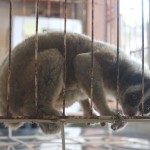
Nuestra más nueva llegada de los primates era un Javan lento loris confiscados en junio 2012. Parece estar en buen estado de salud y se queda en cuarentena. Después de que se transfirió a un recinto de nueva construcción. Slow lorises are nocturnal and arboreal. They feed on sap and floral florescence as well as on gum and insects.
.
BIRDS
We have almost 20 especies de aves en BWRC. Algunos han roto las alas o no están dispuestos a volar debido al largo confinamiento en pequeñas jaulas. Some of the birds are in the process of rehabilitation, and can eventually be released in Bali. Others are waiting to be transferred to centres at their place of origin.
Grey-headed fish eagle (Ichthyopaga ichthyaetus)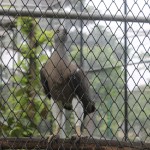
Grey-headed fish eagle is a bird of prey found in Southern Asia from India and Sri Lanka to Southeast Asia. It feeds primarily on fish, but it will also take other prey, including reptiles. The eagle at BWRC is now in a rehabilitation cage and is flying and hunting very well. Debe ser transferido a Sumatra o Kalimantan para un lanzamiento ya que la especie no está presente en Bali.
.
Águila de mar de vientre blanco (Haliaeetus leucogaster)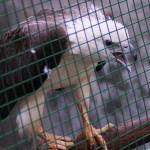
White-bellied sea eagle can also be found from India and Sri Lanka through Southeast Asia to Australia. It lives near coasts and major waterways, and is an opportunistic feeder. The eagle at BWRC is unable to fly due to an unknown cause and cannot be rehabilitated before we find out the cause.
.
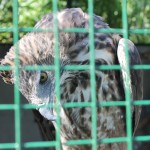 Changeable hawk-eagle (Nisaetus cirrhatus)
Changeable hawk-eagle (Nisaetus cirrhatus)
The changeable hawk-eagle is a medium-large raptor with a large range from India to Southeast Asia. Some subspecies have crests while others are crestless, hence the name “changeable”. Some subspecies are also dimorphic. This makes precise identification difficult. The eagle at BWRC does not have a crest.
.
Cometa de Brahminy (Haliastur indus)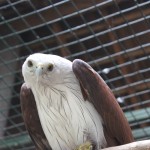
Brahminy kite is a distinctive bird of prey with chestnut colored plumage with white head and breast, and black wing tips. It’s widely spread from India through Southeast Asia to Australia. At the moment we have two Brahminy kites at BWRC. If their rehabilitation is successful, they could be released here in Bali.
.
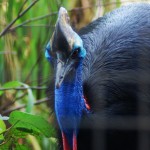 Southern cassowary (Casuarius casuarius)
Southern cassowary (Casuarius casuarius)
Southern cassowary is a large flightless bird found on the island of New Guinea (Indonesia & Papua New Guinea) and north-eastern Australia. The Southern cassowary is one of three cassowary species in New Guinea, where they are heavily hunted, captured and traded close to populated areas. Cassowaries are of high cultural importance, and constitute a major food source for subsistence communities.
.
Victoria crowned pigeon (Goura victoria)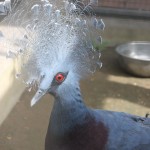
Victoria crowned pigeon is likely the largest of all pigeon species. It’s a steely bluish-grey bird with striking red eyes and a large, white tipped, fan-shaped crest of feathers on its head. The species is found only some northern parts of New Guinea(Indonesia & Papua New Guinea). The population is declining due to habitat loss and hunting for meat as well as feathers.
.
This Galliform bird used to be common and widespread through Southeast Asia but due to habitat loss and fragmentation its numbers are rapidly declining. In Indonesia, the nominate subspecies, Java peafowl (P.m. muticus) is endemic to the island of Java. We have a pair of these beautiful birds at BWRC.
.
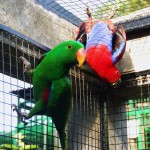 Eclectus parrot (Eclectus roratus)
Eclectus parrot (Eclectus roratus)
Eclectus parrot is native to the Solomon Islands, New Guinea, northeastern Australia as well as Sumba and the Maluku Islands of Indonesia. It is special for its extreme sexual dimorphism; they colouring between sexes is totally different, males being bright green and females bright red.
.
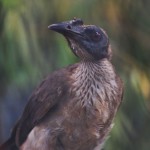 Helmeted friarbird (Philemon buceroides)
Helmeted friarbird (Philemon buceroides)
Helmeted friarbird belongs to a family of honeyeaters and is native to Indonesia, Australia, Papua New Guinea and Timor-Leste. In Indonesia it can be found in the Lesser Sunda Islands (Nusa Tenggara), except in Bali. We have a group of these birds at BWRC. A habitat assessment is being done on the neighbouring island of Lombok for a possible release site.
.
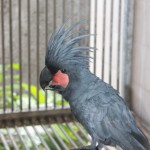 Palm cockatoo (Probosciger aterrimus)
Palm cockatoo (Probosciger aterrimus)
Palm cockatoo is yet another species found in New Guinea (Indonesia & Papua New Guinea) and northeastern Australia. The palm cockatoo is a large, smoky-grey, almost black bird with a distinctive red cheek patch. This cheek patch changes colour; it can be very pale in sick birds and bright red when the bird is very excited or alarmed.
.
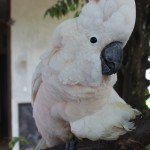 Salmon-crested cockatoo (Cacatua moluccensis)
Salmon-crested cockatoo (Cacatua moluccensis)
Salmon-crested cockatoo, also known as Moluccan cockatoo, is an endemic species to South Moluccan islands. Almost all of the remaining population is found on the island of Seram. This species has suffered from illegal bird trade as well as habitat loss.

